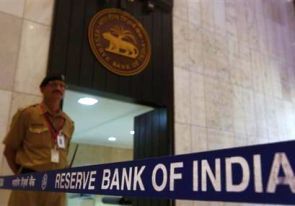 This year marked a reversal of the interest rate cycle, something many economists hadn’t quite expected at the beginning of the year.
This year marked a reversal of the interest rate cycle, something many economists hadn’t quite expected at the beginning of the year.
The repo rate, or the rate at which banks borrow from the Reserve Bank of India, may end the year at eight per cent, a level where it stood at the beginning of 2013.
Early this year, most economists had expected the repo rate would be cut 100 basis points through the year.
But due to concerns on the inflation and the rupee fronts, the cuts were limited to 75 basis points till May 3, followed by a reversal beginning with the central bank’s first monetary policy review under the governorship of Raghuram Rajan, on September 20.
Currently, the rate stands at 7.75 per cent. The Street expects a further rise of 25 basis points in the mid-quarter review of monetary policy on Wednesday.
This is because Consumer Price Index-based inflation rose to 11.24 per cent in November, compared with 10.17 per cent the previous month; Wholesale Price Index (WPI)-based inflation rose to 7.52 per cent from seven per cent.
“RBI said inflation was the key trigger for it to start raising rates since September.
On a year-on-year
Realigning interest rates in India with global interest rate cycles might be a consideration for RBI as well,” said Siddhartha Sanyal, chief India economist, Barclays. He had expected a 100-basis-point cut in the repo rate this year.
What wasn’t foreseen was a plunge in the rupee; it fell to an all-time low of 68.85/dollar on August 28.
“Despite growth being a concern, with inflation remaining significantly stubborn for most of the year, the policy stance had to shift and calibrate, in terms of addressing inflationary expectations.
"A large part of this inflation came from supply constraints.
"In addition, RBI mounted an interest rate defence to impart stability to the highly-volatile currency.
"A hint of taper from the US Fed chairman by May-end, along with our external sector vulnerability through widening of the current account deficit to unsustainable levels, prompted the central bank to squeeze domestic liquidity and maintain higher interest rates,” said Shubhada Rao, chief economist, YES Bank.
At the beginning of this year, Rao, too, had expected a 100-basis-point cut in 2013.




.jpg)





